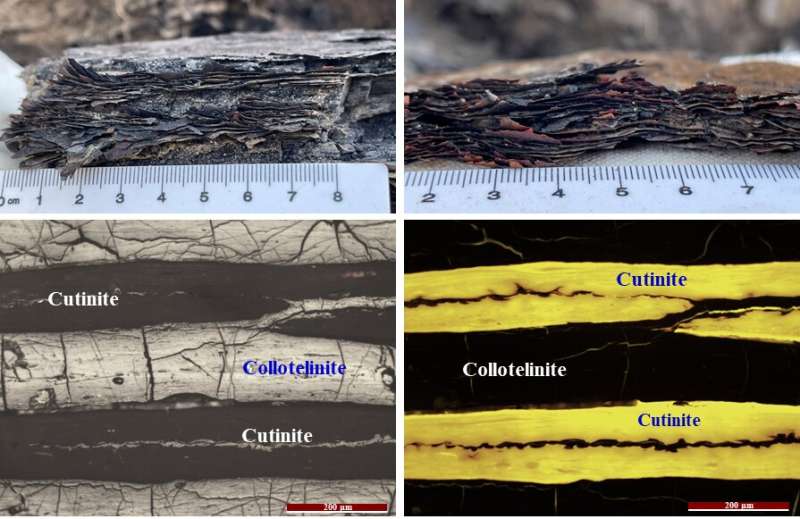Petrology and geochemistry of the Carboniferous cutinite-rich coals from the Hequ area of China

For a study now published in Science China Earth Sciences, Dr. Daofu Song (State Key Laboratory of Petroleum Resources and Prospecting, China University of Petroleum, Beijing) and his team collected cutinite-rich coals from the Upper Carboniferous Taiyuan Formation in the Hequ area, China, and studied their petrological and geochemical characteristics.
The team found that these cutinite-rich coals exhibit a distinctive papery, sheet-like nature when they are weathered (see image below). That is why these coals are usually known as 'paper coal'. The macerals in these coals are dominated by ribbon-like cutinites (17.6-44.9%) and collotelinites (35.4-69.6%).
However, the researchers pointed out that the coals from different areas have distinctive and varying cutinite types, microstructures, and maceral compositions. At the same time, the team indicated that these coals have a good potential for generation of both liquid and gaseous hydrocarbons, due to the accumulation of cutinites.
The researchers examined the organic geochemical composition of these cutinite-rich coals using gas chromatography-mass spectrometry (GC-MS). They found that the coals have abundant n-alkanes, hopanes, steranes, sesquiterpanes, and tetracyclic diterpanes. Based on palynology and geochemistry results, the team pointed out that the coal-forming plants were predominantly pteridophytes, with little contributions from gymnosperms and bacteria.
Cutinite-rich coals are a special type of coal and massive accumulations of cuticles as cutinite in coal are rare. Song and his team attributed the deposition of Carboniferous cutinite-rich coals in the northern edge of the North China Craton to the regional distinctive peat deposition conditions. They pointed out that the frequent episodes of marine transgression and the influence of the strong water currents in the region might be the dominant reasons resulting in the formation of this special coal.
More information: Daofu Song et al, Petrology and geochemistry of the Carboniferous cutinite-rich coals from the Hequ area of Shanxi Province, China, Science China Earth Sciences (2022). DOI: 10.1007/s11430-021-9960-8
Journal information: Science China Earth Sciences
Provided by Science China Press



















